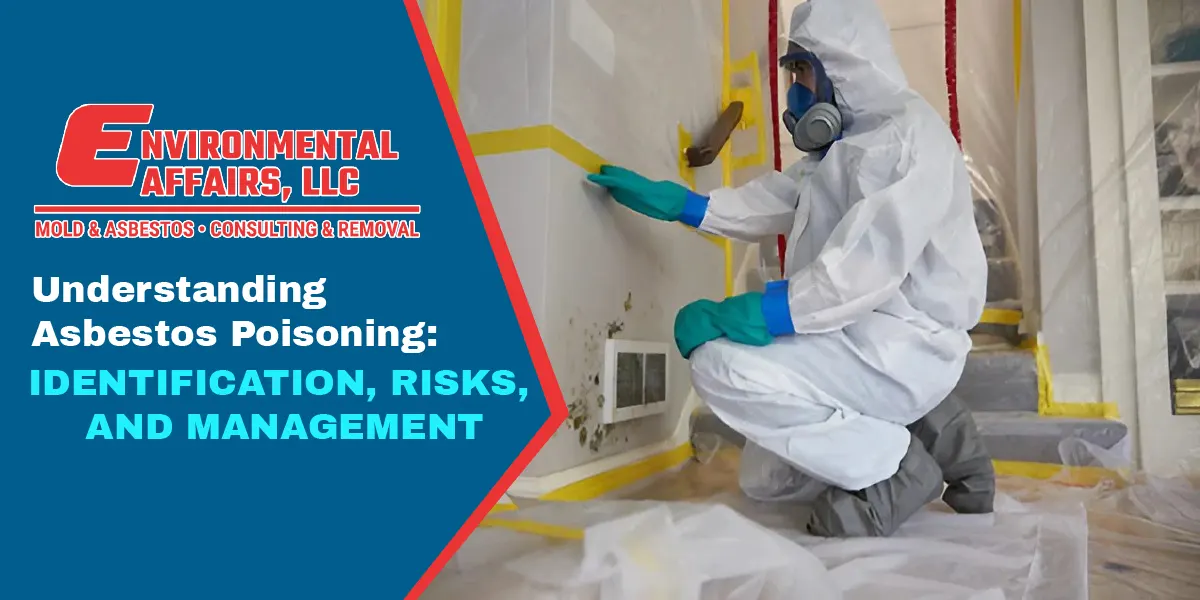Understanding Asbestos Poisoning: Identification, Risks, and Management

Introduction to Asbestos
Asbestos, a naturally occurring mineral known for its heat resistance and fibrous strength, has been utilized in various applications from building materials to textile products. While its utility in construction and manufacturing was prominent until the 1970s, the health risks associated with asbestos exposure have since led to stringent regulations.
Identifying Signs of Asbestos Poisoning
Asbestos exposure primarily affects the lungs, leading to several potential health issues. Common symptoms of asbestos poisoning include:
- Shortness of Breath: This early sign is due to lung scarring caused by inhaled asbestos fibers.
- Swollen Fingertips: A condition where the fingertips appear wider and rounder, seen in about half of those with significant asbestos exposure.
- Persistent Cough and Wheezing: A chronic, dry cough and wheezing sound when breathing could indicate lung inflammation.
- Severe Fatigue: Ongoing tiredness is common due to compromised lung function and body stress.
What to Do If Exposed to Asbestos
Immediate action is recommended if you suspect asbestos exposure:
- Consult a Healthcare Professional: Early medical intervention can help manage symptoms and monitor lung health.
- Monitor Health Changes: Regular check-ups are crucial for catching asbestos-related diseases early, especially if symptoms develop.
Long-Term Health Risks of Asbestos Exposure
Asbestos can lead to several severe conditions, notably:
- Asbestosis: A lung disease resulting from high levels of asbestos exposure over extended periods, leading to progressive lung scarring.
- Mesothelioma: A rare and aggressive cancer affecting the lining of the lungs and abdomen, manifesting decades after exposure.
- Lung Cancer and Other Cancers: Asbestos significantly increases lung cancer risks, especially among smokers, and has been linked to other cancers, including laryngeal and ovarian cancer.
- Pleural Disease: This non-cancerous issue affects the lung’s lining, potentially causing difficulty breathing and reduced lung function.
Risk Factors and Prevention
Those most at risk include construction and maintenance workers, miners, and individuals involved in asbestos processing. Preventative measures include:
- Regulating Asbestos Use: Following guidelines to minimize exposure, especially in occupations at high risk.
- Lifestyle Adjustments: Avoiding tobacco smoke, maintaining a healthy diet, and ensuring regular exercise.
- Environmental Awareness: Being cognizant of asbestos-containing materials in older buildings and opting for professional removal services when necessary.
Treatment Options for Asbestos Poisoning
While there is no cure for damage caused by asbestos, treatments focus on managing symptoms and improving quality of life:
- Pulmonary Rehabilitation: A tailored exercise program that helps maintain lung function.
- Oxygen Therapy: For those experiencing severe breathing issues.
- Surgical Interventions: In extreme cases, options like lung transplants may be considered.
Professional Asbestos Removal Services by Environmental Affairs
If you’re concerned about asbestos in your home or workplace, Environmental Affairs offers expert asbestos removal services to ensure safety and compliance. Our trained professionals are equipped to handle all aspects of asbestos abatement, from initial inspection to safe removal and disposal. Don’t risk your health or the safety of others—contact Environmental Affairs today for a thorough asbestos assessment and removal plan tailored to your needs.
Remember, early action and professional management are key to handling asbestos exposure safely and effectively. For more information or to schedule a service, please reach out to our team. We’re here to help you create a safer living and working environment.
Recommended Posts

What Is Asbestos? Everything You Need To Know
April 22, 2024

How Can I Tell If My Popcorn Ceiling Has Asbestos?
June 6, 2022


